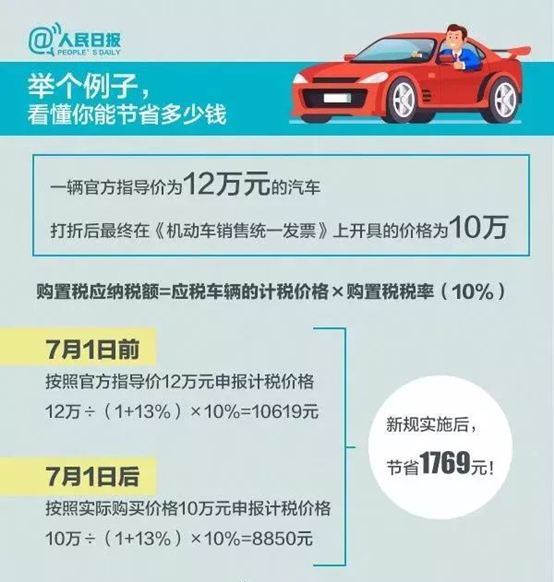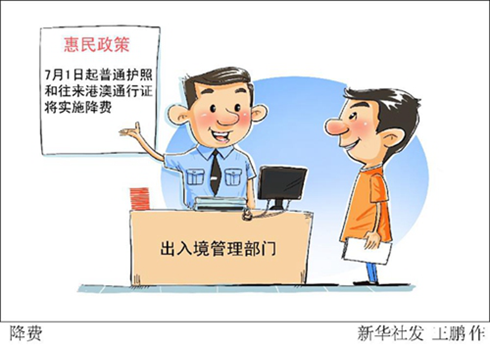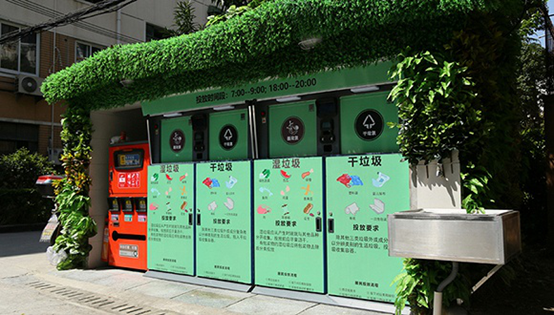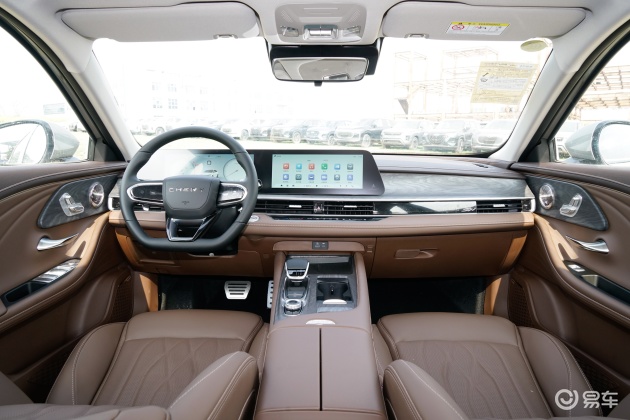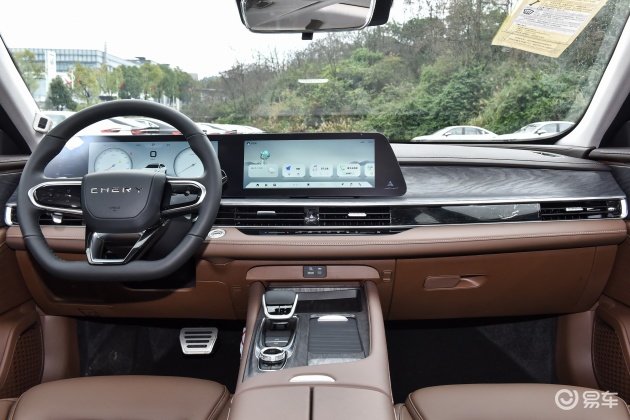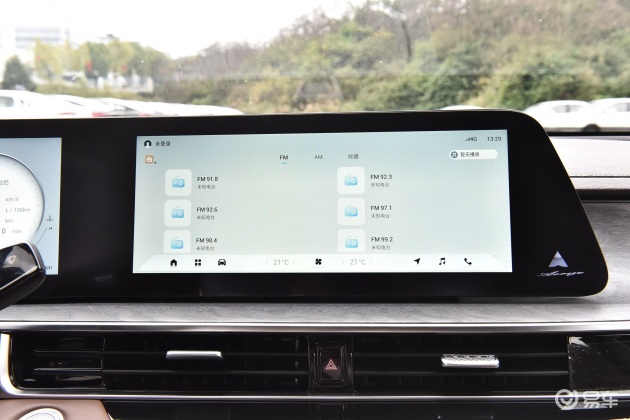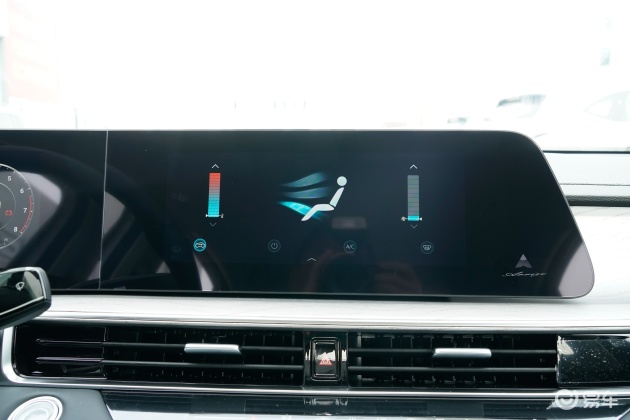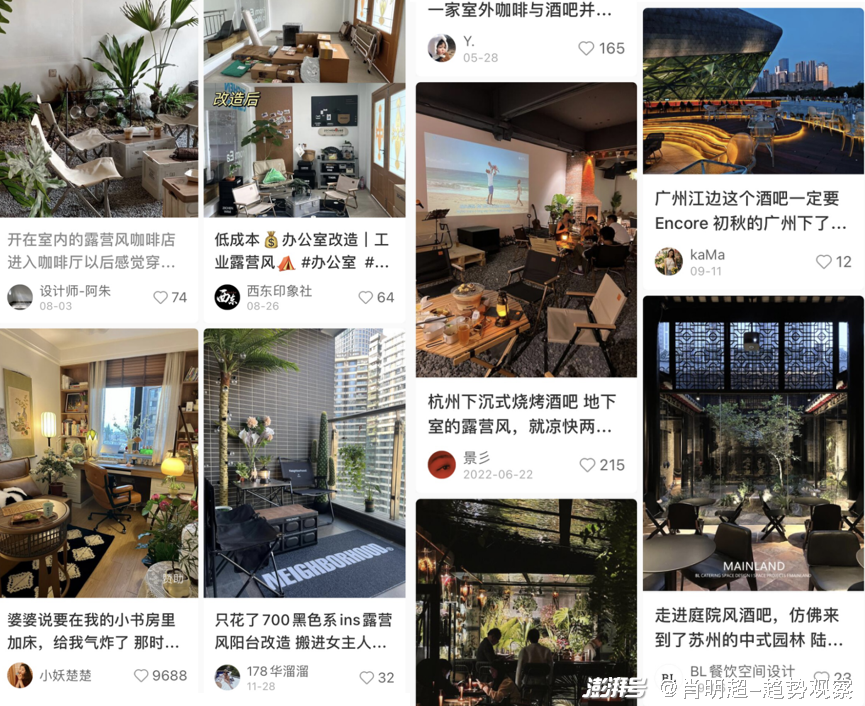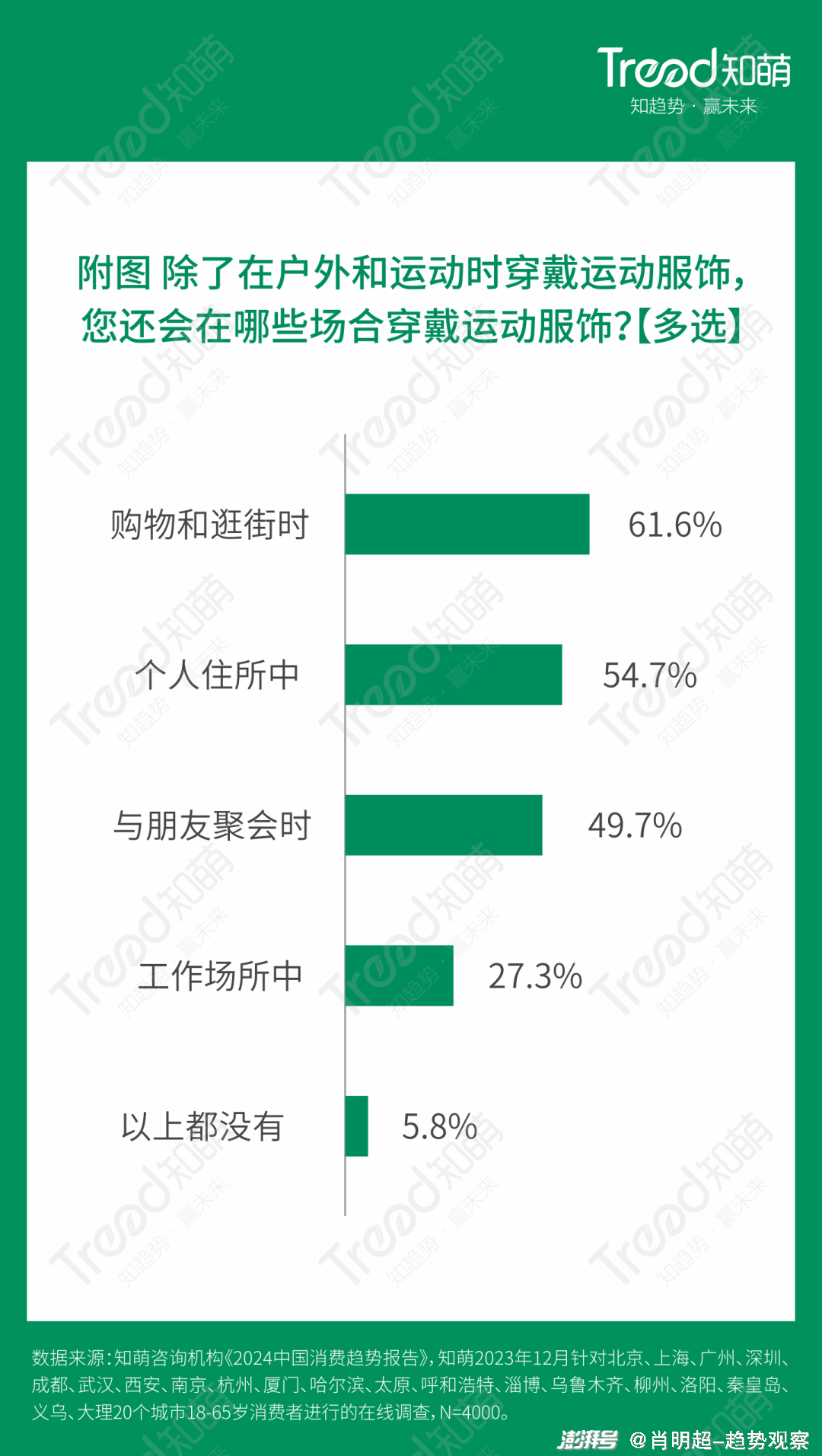
Here is the "Meet Good" column of People, and the theme of this issue of "Meet Good" is "A Guide to Eliminating Class Taste".
When it comes to "going to work", what do you think of?
Newly-graduated migrant workers feel that they are gradually infected with an old flavor, and the "clarity" in their eyes suddenly becomes strange; Friends who are caught in job burnout begin to think about how to make themselves happier since classes must be attended. There is also the real smell that emanates from the whole body after being deeply immersed in work, which suddenly reminds us whether it is time to take care of our health.
After facing the computer for a long time, the eyes and thoughts that are dry and stuck can be awakened again by handwriting and drawing. Trapped by the ensuing heavy work, you might as well try going downstairs for a walk. Take a little time to stare at a tree swaying in the sun, stew a pot of warm stomach soup, or just take a leisurely hot bath. When the taste of physics dissipates, the taste of mind can be cured bit by bit.
Going to work is indeed a big event, but it is also a big thing to protect our sensitivity to life. The excessive invasion of class flavor may make us gradually lose our perception of "ourselves" and become numb and insensitive.
After all, besides being a "working person", we can also be a person who has a good life.
Planning, writing |Jun
Edit |Chuming
Dissipate the physical class smell, and the psychological class smell can also be cured.
@ Lekszi Spray some favorite perfume
Speaking of going to class, there should be nothing faster and more direct than perfume.
Although we are not a professional perfume user, we also have requirements for station perfume. It can’t be too fragrant, but it can’t be without a sense of existence. It is best to have a low-key and gentle taste. After nearly five years of working experience,「Lazy Sunday」(the name of perfume type) is a very good choice. That’s right, every second of the workers at the station is longing for the weekend, and the perfume for working is no exception.
To tell the truth, sitting on the workstation spraying perfume, even the time for fishing is unconsciously lengthened, which is an excellent time to appreciate a perfume-the front notes smell like sweet lychee candy, followed by cold orange flowers and rose fragrance, and after a while, the elegant musk slowly emerges.
Recently, I learned a new word "busy place" by listening to podcasts. I think the presence of this fragrance has also brought me into a wonderful and fresh enchantment, so that I can’t be bothered by my busy work and temporarily calm my inner anxiety.
Tuyuan movie "Perfume"
@ West Make a soup.
My job requires frequent business trips. When you are on a business trip, you are in the company for 24 hours, and there is almost no so-called off-duty time. The whole person will live a very delicate life, and clothes and shoes will be the most comfortable to wear, regardless of whether they look good or not. It’s impossible to draw makeup outside the hotel, and your head won’t be washed. Even in a city like Shanghai, you don’t want to wear more socks when wearing slippers.
The whole person switched to work mode, so it can be said that there is no vitality at all. When you suppress the plan, it fully embodies what is called "totally embarassed, flustered, rolling and crawling". Sometimes people who look at the street through the window feel like they are in prison. This wonderful world and sunshine have nothing to do with me.
So every time I finish a business trip or write a plan, I will make a soup and smell it from the inside out. Soaking up this matter can completely relax the nerves of the whole body, clear the brain and wash away the mess. Generally, a better soup spring will provide very expensive body lotion and hair care essential oil. After the whole body is fragrant, I will feel "I am alive again!" 」
Tuyuan drama "Crayon Shinchan"
@momo 27 years old Don’t want to go to work, then wash your hair.
For a time, a word was particularly popular-"disgusting to wear." The matching high-frequency phrase is "going to work", which means wearing slippers and underpants, taking a take-away bag as a bag, focusing on a casual one, "almost got it", and people will win when they arrive at the station.
This is probably the change that many people will have after working for a period of time. Many people say that class taste is a state of mind, but class taste is sometimes really specific: I washed my hair and made up every day just after graduation; Gradually, do not wash your hair, just wash Liu Haier, and clip it up with a shark clip behind it; To wear glasses and a hat, grab an old dress from a stool and go out with a broken face.
For a while, I still believed in this truth. Anyway, the company really didn’t care about anything, but occasionally when I saw myself in the reflection of the subway glass, there was still a voice in my heart: Ah, I’m so sloppy.
exist「Sick of going to work」In those days, I was always fidgeting and my work efficiency was low. It’s not for the sake of "serving the United States", but the combination of these small discomforts can make me find many excuses for not doing my work well. In the end, I still have to work overtime to finish my work.
After listening to my confusion, a friend concluded that behind the invasion of Ban Wei, people are actually losing control of their own bodies. Perhaps, at the beginning, the concession was just not to wash your hair and eat breakfast, and then it became more and more out of control until people suddenly realized this at a certain moment, but it was hard to reverse it at that time. The next day, I washed my hair for a long time before going to work. Sure enough, I got a lot of work done, and I was able to socialize and find someone to chat with.
It’s important to strive for more than half an hour’s sleep every day, and it’s also important to take care of yourself. Anyway, you have to work for a long time, and you have to stick to something to achieve sustainable development, haha.
Tuyuan drama series "Little Forest Winter and Spring"
Small fork The "intracranial SPA" brought by the smell of citronella and lemon
Two years ago, in the autumn, I didn’t go out for a long time. It was an increasingly beautiful autumn in Beijing outside, and the room was full of class flavor. One day, I don’t know what insect bit me. I rummaged through the closet to find a bottle of Thai mosquito repellent and itching spray. At first glance, it was expired. I tried to spray it. It was so fragrant, with a faint smell of citronella. I felt like I was back in the ancient city of Chiang Mai in an instant. I was lying in the courtyard of the homestay, barefoot, drinking iced fresh coconuts, with tall palm trees on my head. On the same day, I took this expired bottle of mosquito repellent water and sprayed it several times at home, wanting to wear Southeast Asia immediately.
Later, I collected a lot of things with the flavor of citronella, lemon, orange peel and grapefruit, hoping that my home would always exude a touch of Thai flavor. For example, when using an aromatherapy humidifier, I like the essential oil with the flavor of "Lemon Citronella" best. Just two or three drops will fill the whole room with the refreshing citronella flavor. Citronella and lemon, this has a magical power to CP. No matter how the brain knots and twists the bar, the second you smell it, it’s like doing something.「Intracranial SPA」.
Yes, the word "Southeast Asia" is like the antonym of Banwei. It is stretched, relaxed, wild and watery. Everyone wears flip-flops, sits in the night market square, drinks beer, eats grilled fish and cold mango without thinking about anything, and can also ride a small electric motorcycle and shuttle through the narrow streets. There is no traffic jam and no morning rush hour. You don’t have to wait in line to eat, just walk into a small shop and you can eat delicious soup powder.
To some extent, the fragrance is my arbitrary door. Although my body is still in Beijing, my soul can go for a ride in Southeast Asia with lemongrass and lemongrass, and then come back to work.
Thailand full of lemon and citronella
How can new workers call back their former "clearness"
@ 1027 25 years old Old taste
Since I started to work, I smell old and don’t fit my physiological age. I almost don’t know myself in the mirror when I wash in the evening.
Fortunately, there is a university near my work unit, and now people from other schools can make an appointment to enter the school. I have always been very interested in fields other than my major, such as sociology, anthropology or art. Every time I go to the university to attend an unfamiliar course, the taste of the class automatically disappears a lot.
Audited courses
@zyl 24 years old No longer carefree
One day when I got off the bus, the sun shone on my face, but I found it annoying. I used to like the sun in late autumn and early winter, perhaps because I had to go to work later. This discovery and change made my mood very complicated. I changed from a carefree student to an office worker. I thought my mentality would not change, but I also quietly got a heavy class flavor.
Later, I used my salary to go to the concert of my favorite singer, and at that moment I felt that I was back.
@ Ayue is 23 years old. Woody tone
As soon as I enter the office, I can smell a kind of woody fragrance. Simply speaking, my station seems to be mine.「coffin」Ok.
A few days ago, I turned to the photo album of my freshman year without makeup. At that time, my eyes were full of "stupid clarity", and at first glance, I was a person who had never been to work.
The best way is to meet your best friends from your school days. You must meet them, not just by phone. You will find that it seems that you have returned to the original time at once.
Tuyuan drama "Restart Life"
Pudding Dim eyes
When I first joined the company last year, the intern saw me at first sight and said, I think there is still light in my eyes. But soon I felt that there was always one stone-like task after another, and I had to bite the bullet and break it. If she sees me again, will she find that my eyes have faded?
I don’t need to work in class, but I always stay with the computer day and night. Ban Wei, to me, is like the smell of the living dead. I kept tapping on the keyboard and charging the computer, but my hair was greasy and groggy, and I could fall asleep at any time.
In order to change this state, my colleagues recommended a method to me: set a time when I don’t work, for example, after 10 pm, no matter how much unfinished work there is, don’t do it again. Not staying up late is a respect for the body. With the ddl of the day, the work efficiency during the day will be higher. The evening time should be your own, even if you sleep directly, it is much better than endless work.
Tuyuan drama series "I, get off work"
@cc 25 years old A cloud of brain fog
The class smell is probably that I woke up before the alarm clock rang, and the skylight at 5: 30 in the morning was lightly printed on the quilt through the curtains. Looking at the white wall of the rental house, I suddenly found that my alertness and vitality as a student were gone forever.
The brain is like a rusted gear, and it is difficult to engage in any activities that require deep thinking after work, accompanied by symptoms such as forgetting things and being slow to respond.
Until I got a kitten. After returning home from a long commute, when I opened the door, I saw such a little guy coming to meet me with his head poked around, and the smell of class vanished. When the work is not smooth, the thought that there is such a small life at home that depends entirely on itself, its wet nose, round skull with body temperature, and belly falling together when sleeping gives birth to the motivation to persist. After all, kittens save mankind!
Since classes must be attended, how can we be happier?
@ Nini is 21 years old Appreciate one’s beauty
I feel very tired after a day’s work. Later, I found that as long as I put a good-looking mirror on the workstation, I can enjoy my makeup infinitely every day, and then I feel much better inexplicably! Let’s stop being narcissistic and ashamed!
@ Mu Zi is 28 years old Dancing in the middle of the week and cooking on weekends.
Eating takeout every day, every day at two o’clock and one line, dressed in plain clothes, life has become boring, as if falling into a certain cycle, often feeling boring and not interested in doing things.
Later, my friend came to my house to cook a meal, and I accompanied him from buying vegetables, cutting vegetables, cooking and cleaning the kitchen. I watched him busy but orderly, and suddenly I felt very envious. Since then, I decided to cook at least once a week to regain the fireworks of life. Now I will be very happy to think about what to eat at night when I get off work early.
I will go dancing in the middle of the week when I have plenty of time, and I usually choose Wednesday, because I find that once I set something I look forward to in the middle of the week, I will be very hopeful to go to work on Monday!
My cooking
@Tamako 35 years old Pack takeout in a rice bowl
The artifact I want to recommend is a rice bowl-an ordinary rice bowl for eating at home.
For a person with a very high Engel’s coefficient, the most prominent taste in the "class flavor" is the same "take-away flavor"-the hot air of the food is transpiration with the take-away plastic box, which is like the last "production line" of food processing. Brush them all with a unified flavor, spoon by spoon, along the nasal cavity, to the oral cavity, to the abdominal cavity and then to the pelvic cavity …
Until noon one day, I bought a bag of semi-finished vegetable rice in the supermarket downstairs of the company. Suddenly I found that I didn’t have a heating container, so I bought an ordinary porcelain rice bowl-there were already many glass lunch boxes at home, and I didn’t want another one. Unexpectedly, it opened the door to a new world. The moment I took this bowl of hot rice out of the microwave oven, I felt that I was eating a freshly cooked meal instead of a semi-finished product.
From then on, every take-away meal I ate in the company will be put into this porcelain rice bowl, and then I will eat it with the tableware I brought from home. I feel that every bite I eat is not contaminated with "class flavor" and there is an atmosphere of eating at home.
@ Jiangyue Sun persimmon
It’s time to focus on throwing takeout boxes when you realize that you are full of "class smell". Every day’s heavy work seems to have swallowed up all the energy. When it comes to meals, we have to consider what to use to fill our stomach. First, we feel that all kinds of takeout are not delicious, expensive and unsanitary, so we think about how to do something simple-first steam the rice (eating rice is the stubbornness of southerners), then wash the vegetables, stir fry, lift the pot, wash the dishes and mop the floor after eating-just think about the process again. Ah, let’s order takeout.
But I always forget to throw away the take-away box. At one time, boxes for several days accumulated together, mixing a complex smell of different food fermentation. At that moment, "Banwei" was visualized in the nasal cavity, and I felt an urgent need to do something to get rid of this smell.
I live in the suburbs of Beijing. When I go out on weekends, I can see Huang Chengcheng persimmons hanging on wild trees of different heights. No one picks them, and the over-ripe persimmons fall and rot in the fields. The story of drying persimmons in "Little Forest in Winter and Spring" jumped into my mind, imagining how beautiful it would be to eat a persimmon with a cup of hot tea when it is cold. So I rushed to the field, picked a lot of persimmons, and rushed home for an operation. Finally, I strung the processed persimmons with thin threads and dried them on the balcony, which looked particularly beautiful like a small lantern. During the ten-day drying cycle, the sweet smell of persimmon outweighed the take-away taste.
Drying persimmons like in the TV series "Little Forest"
@ 枹枹枹 momo Go for a walk
I have carefully examined it in the mirror. After five minutes’ examination, I have come to the conclusion that the heaviest taste of Ban is in my eyes.
This conclusion was reached after dressing up one morning. After I put on my makeup, I looked at myself in the mirror. There was no flaw in my makeup, my dark circles were covered tightly, and my eyelids even lit up with flash films, but no matter how I looked at it, I felt uncomfortable. After careful investigation, I found that the original problem was the eyes. There seems to be a fatigue in my eyes, which can’t be covered by a good concealer.
There are still some clues to the specific disassembly. The weakness of the upper eyelid leads to listlessness-often staying up late, making it difficult for the pupils to focus, distracting their eyes, and faintly revealing a feeling of "being alive and dying"-caused by long-term computer exposure. To sum up, the crux is "class flavor".
I was a little shocked by this discovery, because I was doing my favorite job, so I always felt that I was far away from class. But when I think back to the choking moment when I want to breathe out of the water, it is when I reply to work information intensively, so I realize that there is a kind of fatigue, which is called interpersonal fatigue.
Therefore, I have cultivated a most economical way to go to class-walking. And it is the simplest way to walk without any blessing of online celebrity route.
When I walk, I will put my mobile phone in my bag, look up at every grass that passes by my feet, and look at the surrounding buildings and the sky overhead. All these can make me feel relaxed. I will walk very slowly, and behind my hands, I feel like an old man’s sight, especially in the subway station full of people, which is in sharp contrast with the people around me. This extremely slow speed will bring an illusion to my brain: I seem to have retired, and no one has to wait on me without DDL. I feel refreshed after every walk. A five-minute walk will keep me as a "grandson" on WeChat for another hour.
Lovely leaves found while walking.
@ Geometry Try handwriting.
After working in front of the computer for seven or eight years, I suddenly found it difficult to write some words outside of work with the computer. As long as you put your hands in front of the keyboard, an invisible frame will automatically appear hanging over your head. It’s not DDL’s sense of urgency, but it’s a kind of … interference?
It is a feeling that is hard to describe. To paraphrase the metaphor that has been used badly in the past two years: wilderness and track. When I use the computer, it’s like putting my head on the track, thinking like a train, step by step, reaching the finish line; But as long as you pick up a pen and paper, you will return to the wilderness in an instant, free, free and obedient.
My "going to class to taste Dafa" is so ancient (old) that it is to resume handwriting. It’s not a delicate handwritten account, nor beautiful hard-written words. Just dig out a simple notebook and take it with you every day, and write whatever you think of.
I’ve written three or four little notebooks this year. When I suddenly open them, it’s like the author eating poisonous mushrooms. Sometimes it’s poetry, sometimes it’s hormones, sometimes I write about the adventures in my journey, sometimes I’m worried about the kitten’s weight loss, and then I’m thinking about religion and art. I don’t know why, after turning off the computer and using my mobile phone, my sensibility is more acute, and I have no purpose, and I don’t seek efficiency.
Life often runs fast, wrapped in dust, melon skin, time, talk in dreams, washing powder, trivial work, love and gifts. Because it is too fast and complicated, it is always too late to look closely, and it gradually becomes blurred. The record is a kind of detached examination, which can anchor the life rushing forward, such as putting a few commas on a long sentence, making people stop to look at the faded blue curtains, caring about the cold air on their faces after beginning of winter, staring at the stars, eating seriously, salvaging the phone that just dialed and hung up immediately from memory, watering the plants … Life provides content for the record, and the record also reminds us how to live tastefully.
I wanted to give this old-fashioned but happy Amway to my friends who often work at their desks at computers, but after thinking about it, I thought I could give it to everyone.
Don’t believe that writing poetry is narcissism, and keeping a diary is melodramatic nonsense. It is a great thing to protect one’s sensibility and keep one’s enthusiasm and curiosity about life, which is always worthy of praise.
My notebooks
Less entanglement with others and more attention to nature.
@ Melon is 25 years old
Less entangled with people, more natural.
@ Tomato is 24 years old Get off work early
I realized that my class was in the middle of the night when I got off work and took a taxi. I wanted to say thank you to the master, but I blurted out "Received".
Although I lack the courage to leave my job, and if I have to stay up late, my recent attempt is to get off work at 2 o’clock, but I will watch my favorite film and television works until 4 o’clock. Then buy yourself a bouquet of discounted clearance, and you will find that there is nothing wrong with clearance. With a little water and nutrient solution, it will still bloom wantonly, just like me.
@Wilde 25 years old go on a journey
Every Monday, dark circles can always fall to the chin, and when I sit in the company, I feel black all over. On rainy days, it’s not air-conditioning water vapor that evaporates upstairs in the company, it’s my resentment.
Our company works from home every Friday, which has both advantages and disadvantages. The advantage is that it is very free, and the disadvantage is that it will make people feel that the home has become an office environment. I need to leave my city as far away as possible. The greater the difference between where I go and the city where I work, the more I can feel vitality. Just like after the computer is forced to restart, a lot of background software is turned off and it can continue to run smoothly.
@ 京京京京 27 years old Draw a picture.
My work often requires timely response. When I am awake, I feel that my work is like a cover. Even at home, I always feel like sitting at a workstation. Where I am, Benwei is there.
In order to get rid of the taste of class, I began to save myself: pick a night to make sure I won’t be disturbed, put my mobile phone aside and concentrate on painting. Before painting, meditate for 5 minutes, grasp a feeling and start painting. If you don’t know what to draw, there is a trick. At first, you can only draw on a relatively small piece of paper (such as a quarter of A4 paper), so the burden will not be too heavy.
One day after work, I posted my latest painting on the wall, and then nailed the air-dried roses with blue and purple stripes to my photo wall, feeling the long-lost happiness. Looking around again, my plants, paintings I created, my favorite books, French fries freshly baked in the air fryer, newly changed sheets, cervical massagers and calcium tablets given by my friends …… These things make me feel very rich, and I feel that I am not only a working "cow and horse", but also a person who can create freely and live a good life.
In any case, I hope everyone can find some daily anchor points in their lives, so that they can get out of the "glass cover" of work and breathe deeply!
Haruko When "space junk" for a while
I forgot which writer interviewed me and said, "In real life, happiness is not reflected in laughter, and pain is not reflected in crying. When a person is happy, he is very sloppy in doing things."-My class flavor is procrastinating, and I have to pave the way for a long time before starting work.
When I am anxious and procrastinating, I will open a popular science video of bilibili, or open a popular science book like The String of the Universe. No one may believe it when you say it. I like relativity very much. It is really wonderful, and there are many problems that can be expanded around a simple formula. For example, where did our last second go? Is light waves or particles? What is the relationship between the speed of light and the birth of this universe? Each one is enough for me to study for most of the day.
The world reshaped by relativity is huge, profound and poetic. It may be hard to imagine that every photon of light we see comes from billions of years before the birth of the universe. They are brand-new and the oldest. They stand at the beginning of time and arrive at the end of time at the same time. They see the beginning and end of everything, the fate of everything changes and the joys and sorrows of the world. In the eyes of photons, everything happened and nothing happened.
Every time I see these, I feel that people are really small! What an insignificant moment life is, and what is my job as a modern human being? It’s better to go downstairs and bask in the sun and pay a tribute to the light from 4 billion years ago. I think the light is telling me, "Don’t worry, anxiety is nothing.".
Once when I told my friend Xiao Jiang about this hobby, she commented bitterly, "Don’t talk about the taste of class, it’s all gone." And I just asked her slowly, "Now, do you believe in light? 」
Tuyuan movie "The Theory of Everything"
Sleeper Raise yourself again
My way to deal with the taste of class is to "raise myself again."
In addition to physical cleanliness (soaking in a hot bath without any purpose), I have done many things, such as cooking a pot of corn sparerib soup with peeled chestnut kernels in it. A good soup is a steamer for the soul, because I spent a very anxious week at work, and now these anxieties are melted in the steam of warm soup.
And washed my eyes. Really go outdoors to see autumn, and look at a very specific, three-dimensional, round tree in the sunset. On the way home, I saw the thick leaves blown off by the wind in the flower bed. Without hesitation, I stood up and stepped on them to my heart’s content. I felt that they were ten centimeters thick, like fallen leaves like Napoleon cake.
I received a pot of Crab Claw Orchid with bud from a distant friend (because I can never raise it to bloom). According to the tutorial he sent, I carefully unpacked it, arranged it, and agreed to inform him when it bloomed.
For me, removing the smell of class is actually trying my best to save myself. Save your own life and your own time. These things can make me feel my existence-it turns out that I still have some time just to live, not to exchange money for the equivalent exchange.
Crab claw orchid sent by old friend Chen Jianyi.
An egg
@ Li Shutong is 26 years old Run against the social clock
What I hate most is the smell of second-hand smoke from my colleagues. As a cheerful person, I was even advised that "since second-hand smoke is harmful, you might as well join us for a cigarette".
In addition, there is a smell of class that I can’t smell. I am so greasy by my preaching to others. At that moment, my mind flashed back to some "office rules" that I heard from my senior colleagues when I first went to work, and now I have become the most annoying thing.
Later, I made up my mind to go to graduate school at the age of promotion, salary increase and marriage. When riding a bicycle and crunching on the road full of fallen leaves, I felt that love, hope and poetry were within reach. Before you want to change, it is extravagant to talk about love. Everything is about moderation, low-key and equivalent exchange. Before you do anything, you must first ask yourself if you deserve it. Complaining that colleagues smoke inappropriately, that’s what leaders should take care of … These feelings of unworthiness constitute the source of my class’s taste, but taste is taste after all. Now, standing on campus, I begin to understand that class’s taste is only a discipline after all. Running counterclockwise may not gain anything, but it won’t lose anything.
Tuyuan drama series "Little Forest Winter and Spring"
